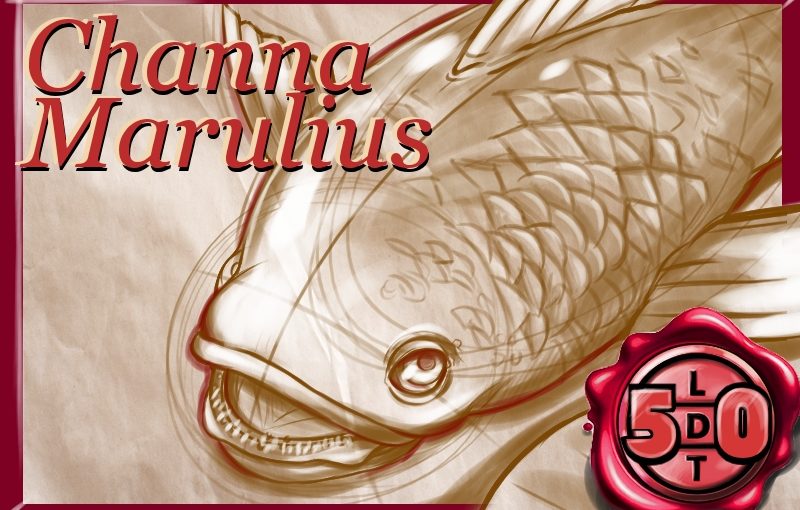“…and today we’re talking about the Bullseye snakehead, which is a classic Floridian story in that it’s from somewhere else and it’s really just making the place worse.”
Fish live and breathe water, right? Of course they do! Fish are in the water and we’re on land, that’s what prevents sharing the planet with sharks from being an omnipresent nightmare. But what if these carnivorous carps could carpe the diem and take a spin on land? The Bullseye snakehead stops at nothing to do the two things it loves to do the most: eating and reproducing. The question is: how do we stop this voracious predator from taking over the world? It might just spell the end of the first part of Life, Death and Taxonomy.
Description
- It’s a long, torpedo shaped fish
- It’s head is flattened toward the front
- It has a gnarly toothy maw.
- The fins on it’s back and belly are long, stretch the length of their body
- They’re brown with black blotches.
- Red-orange eye spots near the tail to confuse and bewilder enemies.
- They’re objectively ugly.
Measure up
Length – 31.5 inches – How many bullseye snakeheads would be as tall as Julia (46 inches)? Hint: Favorite animal. Answer: 1.4 bullseye snakeheads!
Weight – 9 pounds – How many bullseye snakeheads would be as heavy as Calvin (42 lbs)? Hint: Favorite animal. Answer: 4.6 bullseye snakeheads!
Range
- It’s originally from South India, Pakistan, Malaysia, and Southern China and can be found in freshwater reservoirs throughout warm regions.
- It’s an invasive species in tropical regions, preferring temperatures above 50 degrees F.
- It’s a notable invasive species in South Florida
- First introduced to the C-14 Canal in Pompano Beach
- Confirmed in waterways throughout Pompano, Coral Springs, and Margate.
- Reported throughout South Florida, though it’s often mistaken for native species like Bowfin.
- If you’d like to see a video of a man named Chris catching a Snakehead in the C-14 Canal to epic music, there will be a link on the episode page on Ldtaxonomy.com.
Fast Facts
- They spawn in the spring and summer with peak periods in march and august.
- Adults will heard young fish in the shallows of canals and rivers until they grow to six inches.
- Females can lay over 4,000 eggs.
- They aggressively protect their young.
- May even bite humans when babies are threatened.
- Bullseyes grow faster than other species in the Channa genus which means that it’s difficult to control their populations.
- 31 snakehead species are listed as prohibited nonnative wildlife by FWC.
- Which means that it’s illegal to own them.
- And they could pose a threat to the florida’s ecology and/o the health of Floridians.
- They compete with native species for food, feeding on plankton, insects crustaceans, other fish, frogs, lizards, snakes, and smale birds and mammals.
- They may carry diseases and parasites to other fish.
- Good news for Florida’s native species.
- They are good for sport fishing and go after both live and jerk bait.
- It’s also a popular sportfish in its native range.
- And the fish is edible.
- According to Florida Fish and Wildlife, they are said to have medicinal benefits in their native range.
- Supposedly promote healing.
- You can buy and sell it for food but only if it’s dead and on ice.
- How can you help?
- If you catch a snakehead, don’t release it or throw it on the bank where it can wriggle back into the water.
- Putting it on ice is the recommended method of killing it.
- Take a picture of the fish and where note where you caught it and how big it is.
- Report to U.S. Fish and Wildlife by calling 703-358-2148
We’d like to give a special thanks to Florida Fish and Wildlife for providing information about the snakehead! Check them out to learn more about Florida’s wildlife!

